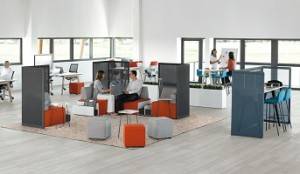May 6, 2014
US employers hold very mixed views on flexible working, claims report
It’s not just companies in the UK who appear to have mixed and sometimes contradictory views on the principles of flexible working. A new study from the US based Families and Work Institute in partnership with the Society for Human Resource Management has found that while more and more firms are open to the idea of working from home for permanent employees, other forms of flexible working such as job sharing, career breaks or sabbaticals to deal with personal and family issues. The 2014 National Study of Employers found that two-thirds (67 percent) of US organisations now allow employees to work from home at least some of the time, up from 50 per cent in 2008. In addition, 41 per cent of firms let workers decide their own working hours, compared to 32 per cent in 2008. However there are falls in the proportion of employers willing to let staff work flexibly in other ways.
























May 9, 2014
Flexible working benefits are undermined by short sighted employers
by Pam Loch • Comment, Flexible working, Legal news, Workplace
There has been a growing perception that flexible working practices are now commonplace in the workplace. However a recent report from Working Families, a charity set up to help working parents and carers find a balance between their responsibilities at work and at home, suggests this is a myth. Their report reflects growing concerns based on experiences and queries from their helpline that employers are in fact, becoming more rigid. The report suggests that working parents are coming under increasing pressure to give up their flexible working arrangements. It highlights “a growing number of callers to the helpline reporting the family-friendly working pattern they have had in place for years being changed or withdrawn virtually overnight, with no opportunity for them to express their views”. Ironically, despite the Government’s championing of flexible working it seems the imposition of employment tribunal claim fees could be behind the backlash. (more…)